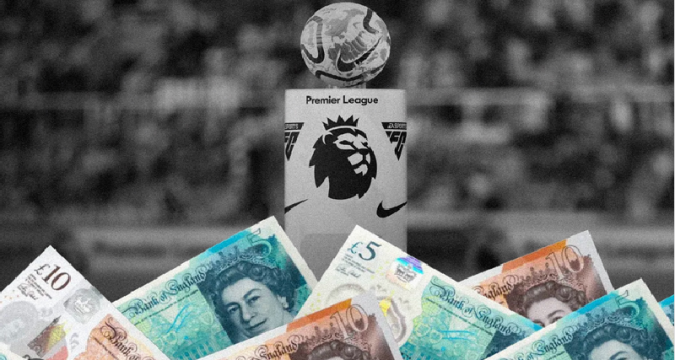
The Euro League transfer market is a captivating spectacle, where clubs across Europe engage in strategic maneuvers to strengthen their squads, balance their finances, and outmaneuver rivals. The transfer window is not just about high-profile signings but involves a complex web of negotiations, financial arrangements, and strategic planning. This article delves into the intricacies of the Euro League transfer market, exploring how clubs mastermind their moves to build competitive teams.
Strategic Planning and Scouting
Clubs invest heavily in scouting networks that span the globe, identifying emerging talents and established stars who can bolster their squads. Scouts provide detailed reports on players’ abilities, potential, and suitability for the club’s playing style.
For instance, Manchester City’s acquisition of Jack Grealish from Aston Villa was the culmination of extensive scouting and strategic planning. Grealish’s dribbling ability, vision, and versatility fit perfectly into Pep Guardiola’s tactical framework. Similarly, Liverpool’s signing of Ibrahima Konate from RB Leipzig addressed their defensive vulnerabilities, demonstrating how targeted scouting and planning can address specific needs.
Financial Management and Fair Play
Clubs must navigate the complexities of transfer fees, wages, and financial fair play regulations. UEFA’s Financial Fair Play (FFP) rules aim to ensure that clubs operate within their means and prevent financial mismanagement. These regulations influence transfer strategies, as clubs must balance spending with revenue generation.
Paris Saint-Germain’s (PSG) signing of Lionel Messi is a prime example of financial maneuvering. Despite acquiring one of the world’s highest-paid players, PSG leveraged Messi’s commercial value to offset his salary. The club anticipated a surge in merchandise sales, sponsorship deals, and global brand recognition, making the deal financially viable. This highlights how clubs use financial strategies to secure top talent while adhering to FFP regulations.
Negotiation Tactics
Negotiations are a cornerstone of the transfer market, involving intricate discussions between clubs, players, and agents. Successful negotiations require a deep understanding of the market, player value, and contractual intricacies. Agents play a pivotal role, acting as intermediaries who negotiate terms, secure lucrative deals, and manage player careers.
Juventus, facing financial pressures, agreed to a relatively modest transfer fee. Ronaldo’s agent, Jorge Mendes, negotiated favorable personal terms, while Manchester United capitalized on the commercial and sporting benefits of bringing back a club legend. This deal underscores the importance of effective negotiation in securing high-profile transfers.
Loan Deals and Player Development
Loan deals are a strategic tool used by clubs to develop young talents, provide playing time to fringe players, and manage squad depth. Loans benefit both the parent club and the borrowing club, offering players valuable experience while ensuring regular game time.
Chelsea’s extensive use of the loan system illustrates its effectiveness. The club regularly loans out young prospects to gain experience in competitive leagues. For example, Fikayo Tomori’s loan to AC Milan allowed him to develop his skills, leading to a permanent transfer. This approach not only aids player development but also generates revenue from transfer fees.
Transfer Deadlines and Last-Minute Deals
The closing days of the transfer window are often marked by frantic activity, as clubs rush to finalize deals before the deadline. Last-minute signings can have a significant impact on a team’s fortunes, adding an element of excitement and unpredictability to the market.
The deal provided Tottenham with a high-quality left-back, addressing a key area of need. Such last-minute deals require swift decision-making, effective communication, and the ability to seize opportunities as they arise.
Youth Academies and Homegrown Talent
Developing homegrown talent is a cornerstone of long-term success for many clubs. Investing in youth academies ensures a steady pipeline of skilled players who understand the club’s philosophy and values. Homegrown players are often more affordable and provide a sense of identity and continuity.
Barcelona’s La Masia academy is renowned for producing world-class talents like Lionel Messi, Xavi, and Andres Iniesta. Similarly, Borussia Dortmund’s emphasis on youth development has yielded talents like Jadon Sancho and Erling Haaland, demonstrating the value of investing in young players.
Market Trends and Globalization
The transfer market is influenced by global trends, economic factors, and changes in the football landscape. The globalization of football has expanded the market, with clubs scouting talent from diverse regions and tapping into new revenue streams.
The rise of the Chinese Super League and Major League Soccer (MLS) as lucrative destinations for players has added new dynamics to the market. Clubs in these leagues offer attractive financial packages, drawing players from Europe and influencing transfer strategies. Additionally, the impact of the COVID-19 pandemic has reshaped the market, with clubs becoming more cautious in their spending and focusing on sustainable growth.
The Euro League transfer market is a complex, dynamic arena where clubs employ a blend of strategic planning, financial acumen, and negotiation skills to mastermind their moves. From high-profile signings to strategic loans and youth development, each transfer window brings a new wave of excitement and intrigue. As clubs navigate the ever-evolving landscape of European football, the transfer market remains a critical component of building competitive, successful teams. The intricate dance of deals, negotiations, and strategic planning continues to captivate fans and shape the future of the beautiful game.